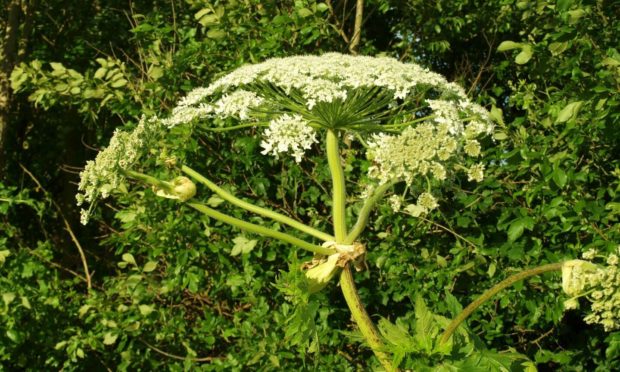People in Aberdeen have been warned over the dangers of giant hogweed if they are spending time outdoors this summer.
The plant, which can cause blistering and scarring if touched, is thriving as hot weather provides ideal conditions for potentially unmanageable growth.
The Property Care Association is urging vigilance to help protect against injury.
Over the years giant hogweed has been responsible for several injuries to children and adults who have come into close contact with the plant.
Chemicals in the plant’s sap can cause photodermatitis or photosensitivity, where the skin becomes very sensitive to sunlight and may suffer blistering, pigmentation and long-lasting scars.
‘Giant hogweed a danger to public health’
Dr Peter Fitzsimons, technical manager of the PCA’s Invasive Weed Control Group, said: “Giant hogweed’s sap is extremely toxic to the skin in sunlight, making it a danger to public health.
“Youngsters are more likely to come into contact with the plant during the summertime and the mix of warm weather and rain has provided good conditions for the weed to take hold this year.
“Giant hogweed is also spreading across a wider area, meaning that people are more likely to encounter it.
“If anyone comes into contact with any part of the plant, followed by exposure to sunlight, they can sustain severe blistering to the skin and discomfort, and this reaction can recur for many years.”
Plant became wild in the 19th Century
Giant hogweed can rise to five metres in height and so can be extremely intimidating.
The invasive plant can produce up to 30,000 to 50,000 seeds, which can survive in the soil for many years. The plant is not native to the UK having been cultivated from the Caucasus Mountains in the 19th century.
Due to it’s impressive look, it was planted in many gardens. However it escaped and has since quickly spread throughout the country first becoming wild in 1828.
A project led by the Scottish Invasive Species Initiative to deal with giant hogweed, was rolled out across the north-east a few months ago. Sheep are brought in to graze on the plant and thereby limit its growth. The hungry animals have a taste for the plant which then uses more energy to regrow, eventually dying off.
Dr Fitzsimons added: “The general public, as well as local authorities, statutory agencies and landowners on whose property people can come into contact with the plant, should be aware of the risks and giant hogweed needs to be controlled and managed professionally.”

